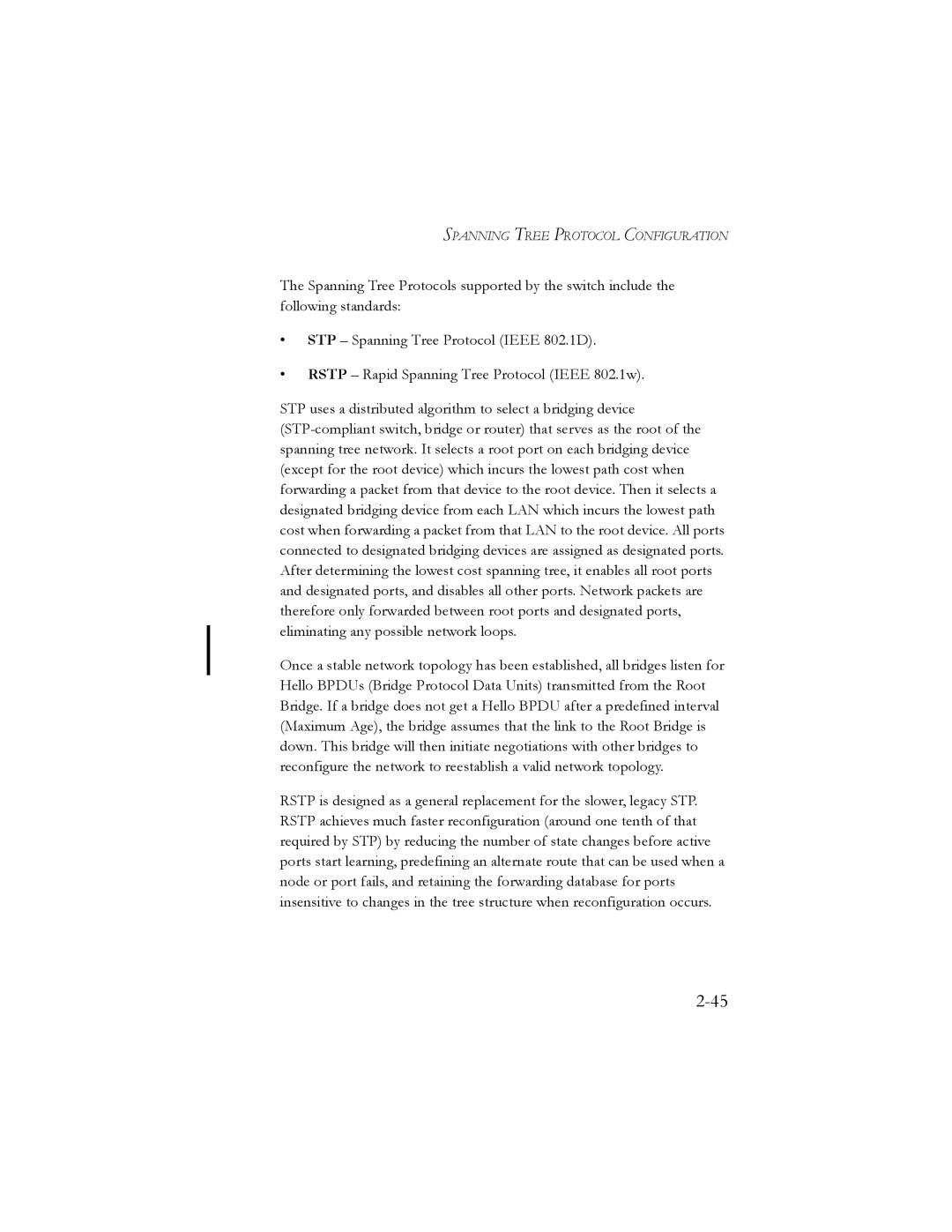SPANNING TREE PROTOCOL CONFIGURATION
The Spanning Tree Protocols supported by the switch include the following standards:
•STP – Spanning Tree Protocol (IEEE 802.1D).
•RSTP – Rapid Spanning Tree Protocol (IEEE 802.1w).
STP uses a distributed algorithm to select a bridging device
Once a stable network topology has been established, all bridges listen for Hello BPDUs (Bridge Protocol Data Units) transmitted from the Root Bridge. If a bridge does not get a Hello BPDU after a predefined interval (Maximum Age), the bridge assumes that the link to the Root Bridge is down. This bridge will then initiate negotiations with other bridges to reconfigure the network to reestablish a valid network topology.
RSTP is designed as a general replacement for the slower, legacy STP. RSTP achieves much faster reconfiguration (around one tenth of that required by STP) by reducing the number of state changes before active ports start learning, predefining an alternate route that can be used when a node or port fails, and retaining the forwarding database for ports insensitive to changes in the tree structure when reconfiguration occurs.
